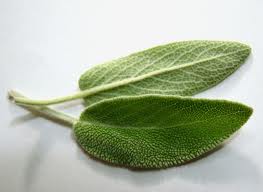Spices around the world
Monday, March 11, 2013
Ginger
Ginger is an herb. The rhizome (underground stem) is used as a spice and also as a medicine. It can be used fresh, dried and powdered, or as a juice or oil.
Ginger is commonly used to treat various types of “stomach problems,” including motion sickness, morning sickness, colic, upset stomach, gas, diarrhea, nausea caused by cancer treatment, nausea and vomiting after surgery, as well as loss of appetite.
Other uses include pain relief from arthritis or muscle soreness, menstrual pain, upper respiratory tract infections, cough, and bronchitis. Ginger is also sometimes used for chest pain, low back pain, and stomach pain.
Some people pour the fresh juice on their skin to treat burns. The oil made from ginger is sometimes applied to the skin to relieve pain.
In foods and beverages, ginger is used as a flavoring agent.
Remember the gingerman? :)
Cumin
Cumin (also known as Jeera) has a richness of history to give it a special place in the world of spices. Ancient Egyptians used it for the mummification process. And the humble jeera is a part of almost every Indian kitchen and on a hot summer day it's sheer bliss to have a glass of buttermilk with a dash of cumin powder. Roasted jeera has a very unique flavor and adds much taste to an ordinary dish like aloo ki sabzi. Apart from taste, cumin has lots of health benefits and that's why you should ass it in your diet.
Bay Leaf
Bay leaves add depth of flavor to soups and sauces. There are two varieties available at The Spice House: Turkish and Californian. The California variety has a bright green color and a beautiful long leaf (making them great for craft work), with a strong, slightly astringent flavor. The Turkish bay leaves have a softer, more subtle flavor and are more commonly used in most cooking.
Bay laurel (Laurus nobilis, Lauraceae). Fresh or dried bay leaves are used in cooking for their distinctive flavor and fragrance. The leaves are often used to flavor soups, stews, braises and pâtés in Mediterranean cuisine. The fresh leaves are very mild and do not develop their full flavor until several weeks after picking and drying
Sage
Sage is an herb from an evergreen shrub, Salvia officinalis, in the mint family. Its long, grayish-green leaves take on a velvety, cotton-like texture when rubbed (meaning ground lightly and passed through a coarse sieve).
Sage is grown in the United States. It also is grown in Albania, Montenegro, Bosnia and Serbia.
Sage enhances pork, lamb, meats, and sausages. Chopped leaves flavor salads, pickles, and cheese. It is one of the most popular herbs in the United States.
Rosemary
Rosemary (Rosmarinus officinalis) is widely used as a spice when cooking, especially in Mediterranean dishes. It is also used for its fragrance in soaps and other cosmetics.
Traditionally, rosemary has been used medicinally to improve memory, relieve muscle pain and spasm, stimulate hair growth, and support the circulatory and nervous systems. It is also believed to increase menstrual flow, act as an abortifacient (causing miscarriage), increase urine flow, and treat indigestion. Almost none of these uses have been studied scientifically in humans. However, one study in humans found that long term daily intake of rosemary prevents thrombosis.
In the lab, rosemary has been shown to have antioxidant properties. Antioxidants can neutralize harmful particles in the body known as free radicals, which damage cell membranes, tamper with DNA, and even cause cell death. Also in the lab, rosemary oil appears to have antimicrobial properties (killing some bacteria and fungi in test tubes). It isn't known whether rosemary would have the same effect in humans.
Thyme
Thyme is one of the best known and most widely-used culinary herbs. It is quite easy to grow and is commonly found as a decorative as well as a functional plant in many home gardens.
Thyme is a perennial evergreen shrub, whose sometimes woody stems are covered with small, gray-green to green leaves. Its small, two-lipped flowers range in color from pale pink to purple and bear quadruplet nutlet fruits. The entire plant is aromatic.
You will find thyme a welcome flavor in salads, soups, chowders, sauces, breads, vegetable and meat dishes, and even jellies and desserts.
Garlic
Garlic has been used as both food and medicine in many cultures for thousands of years, dating back to when the Egyptian pyramids were built. In early 18th-century France, gravediggers drank crushed garlic in wine believing it would protect them from the plague that killed many people in Europe. During both World Wars I and II, soldiers were given garlic to prevent gangrene. Today garlic is used to help prevent heart disease, including atherosclerosis or hardening of the arteries (plaque buildup in the arteries that can block the flow of blood and may lead to heart attack or stroke), high cholesterol, high blood pressure, and to boost the immune system. Garlic may also help protect against cancer.
Garlic is rich in antioxidants, which help destroy free radicals -- particles that can damage cell membranes and DNA, and may contribute to the aging process as well as the development of a number of conditions, including heart disease and cancer. Antioxidants neutralize free radicals and may reduce or even help prevent some of the damage they cause over time.
Subscribe to:
Comments (Atom)












